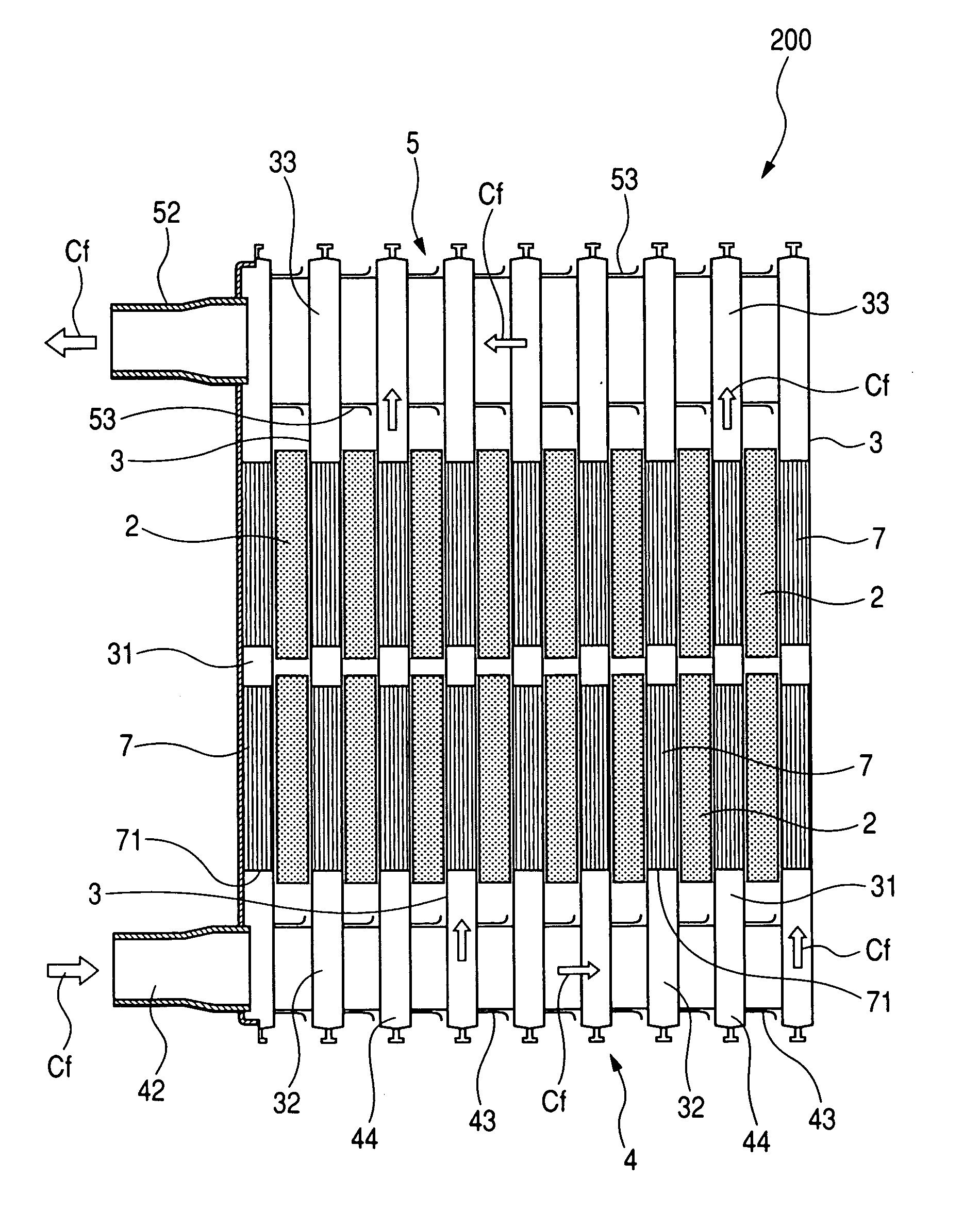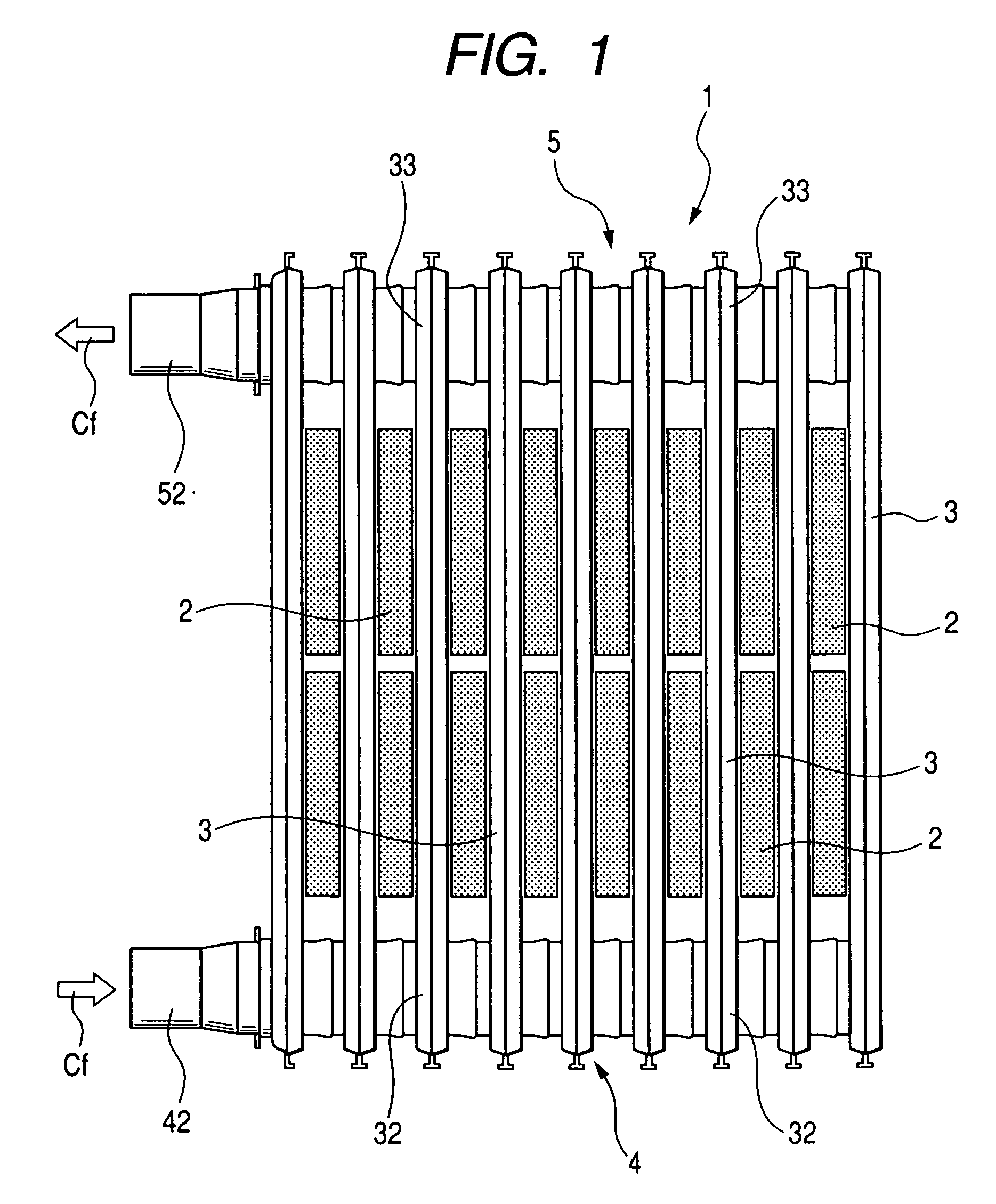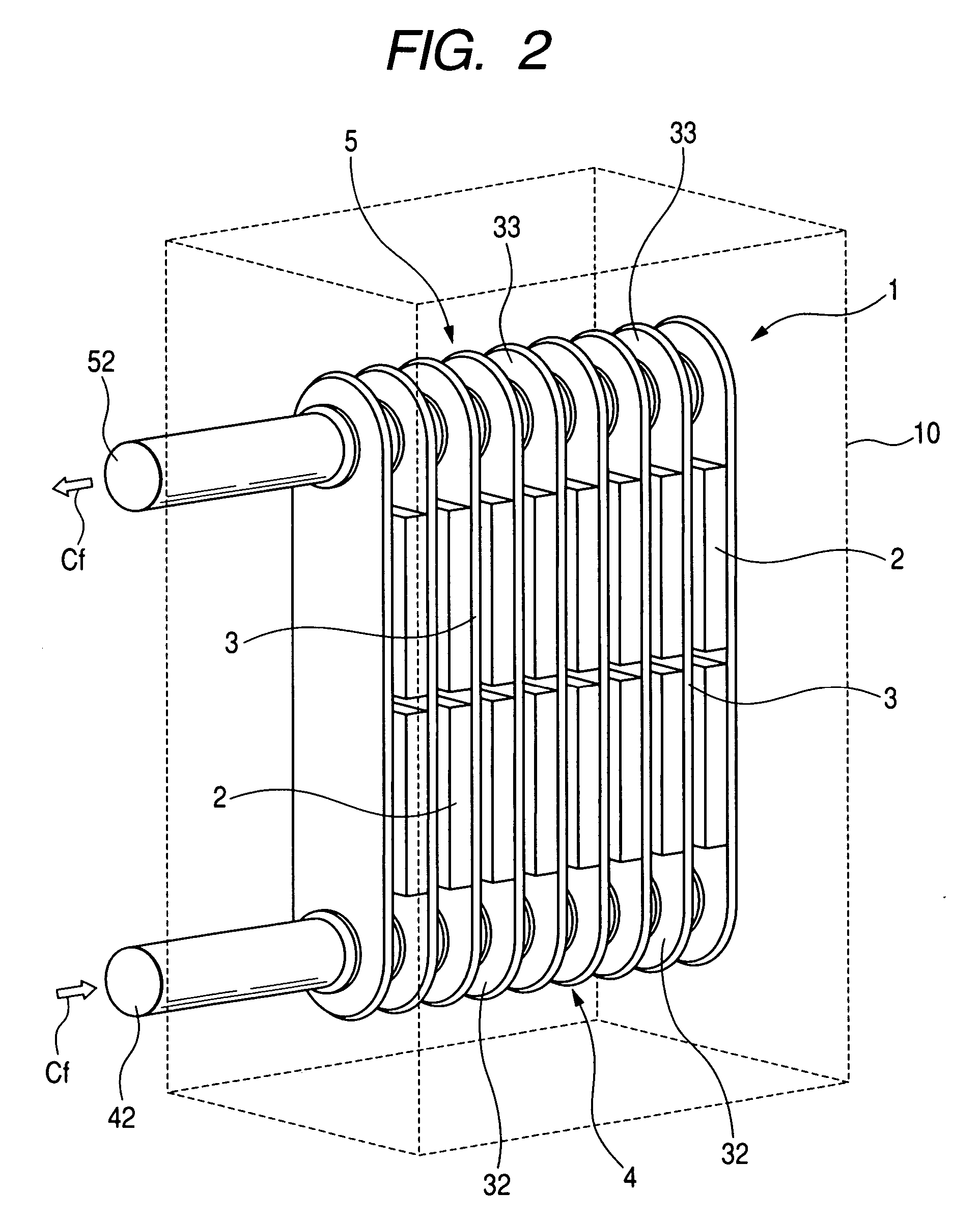Liquid-cooled semiconductor unit for cooling high-power semiconductor elements that are enclosed in modules
- Summary
- Abstract
- Description
- Claims
- Application Information
AI Technical Summary
Benefits of technology
Problems solved by technology
Method used
Image
Examples
first embodiment
[0031] A first embodiment of a liquid-cooled semiconductor unit (referred to in the following simply as a cooled semiconductor unit) will be described referring to FIGS. 1 to 5. FIGS. 3 to 5 are simplified conceptual cross-sectional diagrams, provided for describing the advantageous effects obtained by the first embodiment.
[0032] As shown in FIGS. 1 to 3 the cooled semiconductor unit, designated by reference numeral 1, includes a plurality of semiconductor modules 2 (each having one or more semiconductor elements internally contained therein), and a plurality of cooling tubes 3 which are arrayed in parallel, with each of the semiconductor modules 2 being sandwiched between two of the cooling tubes 3 as shown.
[0033] A coolant supply header 4 of the cooled semiconductor unit 1 is connected to the respective intake end apertures 32 of the cooling tubes 3, with a coolant supply passage 41 within the coolant supply header 4 communicating with (i.e., opening into) respective coolant flo...
second embodiment
[0055] A second embodiment of a cooled semiconductor unit will be described, in which the coolant supply flow passage 41 and coolant discharge passage 51 of a cooled semiconductor unit 100 are formed with respective upwardly (i.e., upward with respect to the flow direction of the coolant Cf) sloping portions 61a, 61b (i.e., such as to produce an upward-sloping direction of flow of the coolant Cf) as shown in the conceptual cross-sectional view of FIG. 6. Alternatively stated, each of the portions 61a of the coolant supply flow passage 41 and portion 61b of the coolant discharge passage 51 is directed upward along the downstream direction of flow of the coolant Cf.
[0056] In other respects, the operation and configuration of this embodiment are similar to those of the first embodiment described above, with reference numerals in FIG. 6 designating components that have similar functions to the correspondingly numbered components of the first embodiment.
[0057] However with the second e...
third embodiment
[0058] A third embodiment will be described referring to FIG. 7, which is a cross-sectional diagram taken in elevation of a cooled semiconductor unit 200.
[0059] With this embodiment, for ease of manufacture, each of the intake end aperture portions 32 has coupling tubes 43 formed thereon, adapted to enable the coupling tubes of adjacent outlet end aperture portions 33 to be joined together. In that way as can be readily understood from FIG. 7, the coolant supply header 4 is constituted by the set of intake end aperture portions 32 and their coupling tubes, in combination. Similarly, each of the outlet end aperture portions 33 has coupling tubes 53 formed thereon, with the coolant discharge header 5 being constituted by the set of intake end aperture portions 32 and their coupling tubes 53, in combination.
[0060] A first distinguishing feature of this embodiment is that the cross-sectional area of the flow passage within the coolant discharge header 5 (corresponding to the coolant d...
PUM
 Login to View More
Login to View More Abstract
Description
Claims
Application Information
 Login to View More
Login to View More - R&D
- Intellectual Property
- Life Sciences
- Materials
- Tech Scout
- Unparalleled Data Quality
- Higher Quality Content
- 60% Fewer Hallucinations
Browse by: Latest US Patents, China's latest patents, Technical Efficacy Thesaurus, Application Domain, Technology Topic, Popular Technical Reports.
© 2025 PatSnap. All rights reserved.Legal|Privacy policy|Modern Slavery Act Transparency Statement|Sitemap|About US| Contact US: help@patsnap.com



